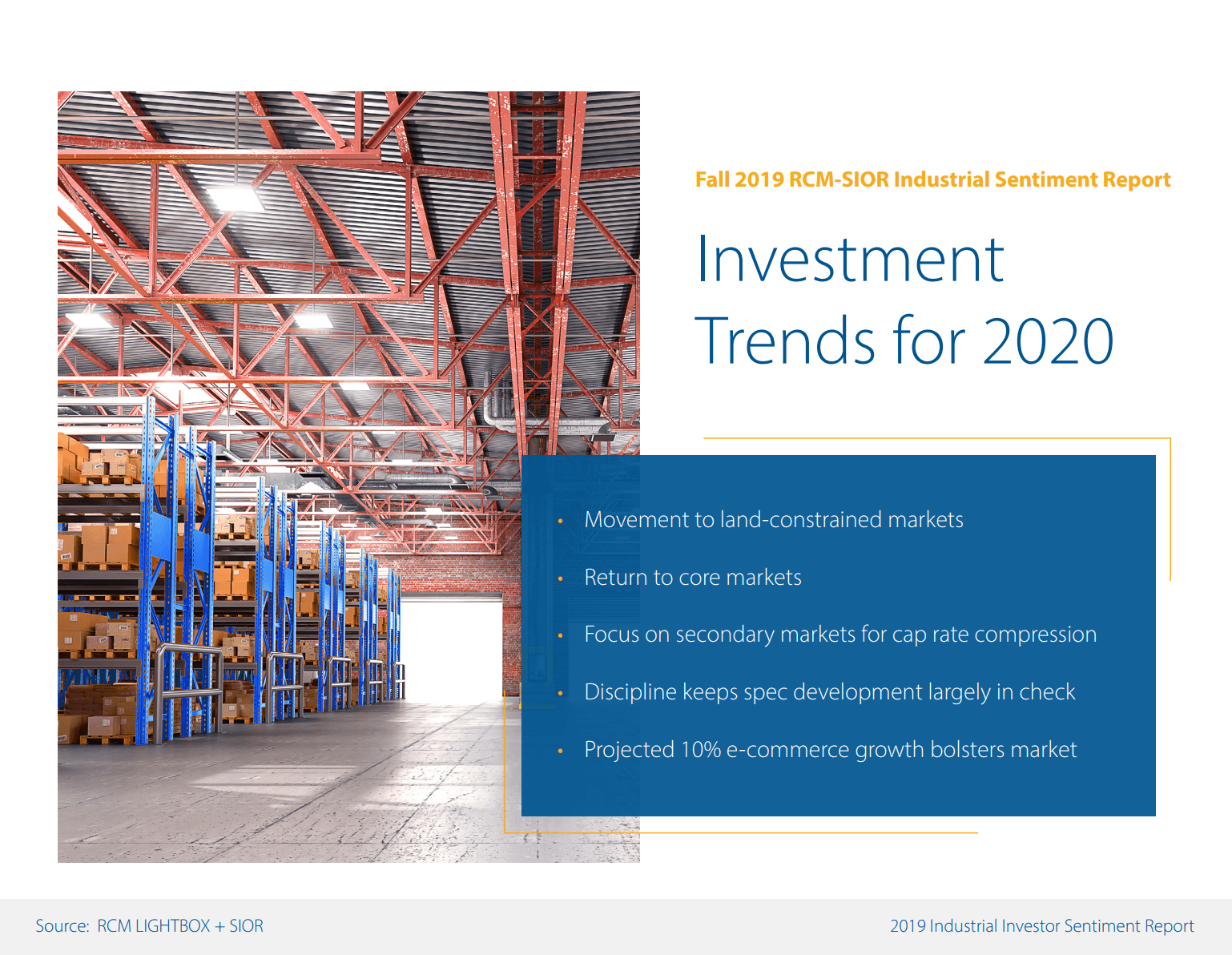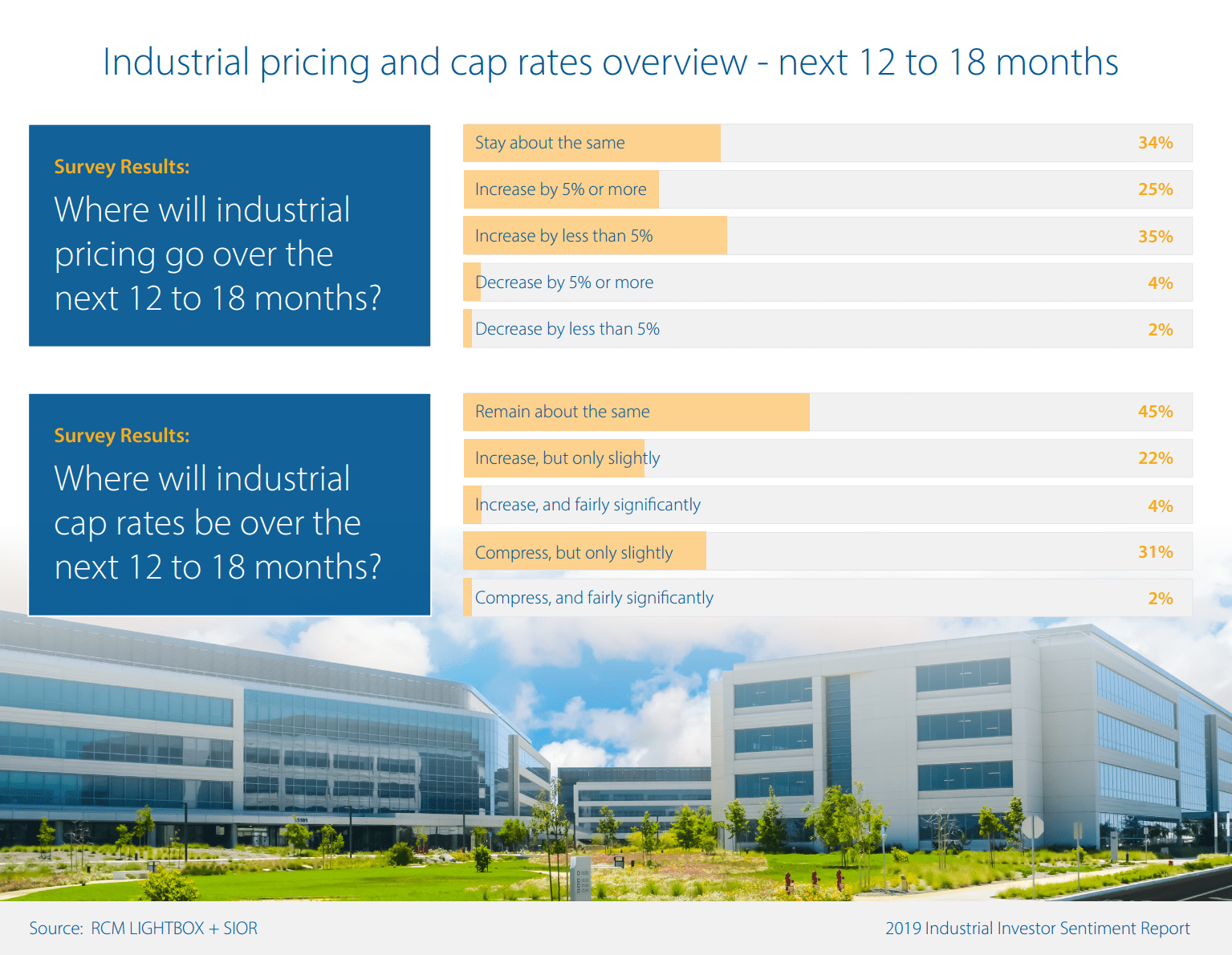Industrial Investors Shift Strategies: Report
While still bullish on the sector, industry experts are taking a more strategic investment approach, according to the newest RCM-SIOR investor sentiment study.
Industrial investors are not pulling back from the sector because of concerns about a slowing economy and potential impacts from tariffs, but they are shifting strategies and looking to find safe havens, including gearing their portfolios toward core markets and land-constrained markets that provide potential for higher rent growth, according to a new RCM-SIOR industry report.
The annual industrial investor sentiment report aggregates insights and perspectives from industrial market experts—investors, developers and brokers—across the U.S. This year’s report shows the industry expects are thinking more strategically about investments and business decisions but are still bullish on the industrial sector and the tone remains one of overall optimism.
READ ALSO: Few Economists See Downturn Despite Waning Growth Outlook
The positive outlook is based mainly on market fundamentals, long-range corporate growth projections and e-commerce, which continues to transform the economy. The report notes that 10 percent annual growth is expected from e-commerce, as the sector continues to drive warehouse and distribution activity.
“The significant expansion in e-commerce and the ongoing need for realignment of the corporate supply chain continues to shape the industrial sector and helps position it as a top asset class for investors, now and moving forward. There is also a significant push to tap into consumers in large, urban population pools, which is driving considerable warehouse and distribution activity,” Tina Lichens, chief operating officer, RCM, stated in the report.
Some respondents such as Anthony Lydon, a national director in JLL’s Phoenix office, said they expect to see continued growth, but at a slower pace than the last two years. Millions of square feet have been added in markets such as Atlanta, Dallas, Chicago, Los Angeles and the Inland Empire, where land availability is limited but the area has seen record development, absorption and investment.
Risk-adjusted returns
Cap rates in the Inland Empire and Los Angeles are about 4 percent. Investment in places such as Chicago’s popular O’Hare submarket has pushed land prices to more than $30 per square foot and core investment properties to about $125 per square foot, according to Erik Foster, principal & leader of Avison Young’s National Industrial Capital Markets Group based in Chicago.
While some focused on seeking opportunities in land-constrained coastal markets in California, Florida and Northern New Jersey, other investors said they are looking at secondary and tertiary markets where there hasn’t been as much cap rate compression and annual rent growth between 5 percent and 7 percent.
Pendelton White, president & chief investment officer of Plymouth Industrial in Boston, noted in the report that risk-adjusted return metrics for Class B properties in secondary markets could be better than Class A properties in prime markets. Some secondary markets that could support long-term growth include Columbus, Ohio, Charlotte, N.C., and Reno, Nev. Business-friendly states with reasonable regulatory oversight and moderate tax structures are among areas that could see more investment, including Arizona, Nevada, Tennessee and Florida, particularly if the markets have a strong business climate, solid logistics infrastructure and labor pools close to large population pools.
Others are looking at last-mile delivery locations as a growing part of the sector, said Robert Thornburgh, regional president, brokerage at Kidder Mathews, and the outgoing president of SIOR. He also noted increasing land values will mean the development of more multi-story facilities.
The report did find that a more disciplined lending environment has mostly kept a check on overbuilding, although 51 percent of those surveyed said they were somewhat concerned about overdevelopment and oversupply; 33 percent said they were not at all concerned. Only 4 percent responded that they were very concerned and 12 percent said they were increasingly concerned.
Pricing to remain strong
Investor sentiment on pricing remains strong, with 94 percent of survey respondents expecting pricing levels will at least remain the same, which is comparable to the last two years. Nearly 60 percent surveyed this year believe prices will go higher by as much as or more than 5 percent.
That number has dropped from 68 percent in last year’s survey. Twenty-five percent of investors surveyed this year said pricing would increase by 5 percent or more. However, that is down from 38 percent in 2018 and 34 percent in 2017.
Survey respondents were much more bullish about chances of further compression of cap rates than they were in 2018 and 2017. While 45 percent said they expect cap rates to remain about the same over the next 12 to 18 months, nearly 32 percent believe further cap rate compression, driven in part by the low interest rate environment, is possible. That has nearly doubled since 2017 and 2018, when the response ranged between 17 and 18 percent.










You must be logged in to post a comment.